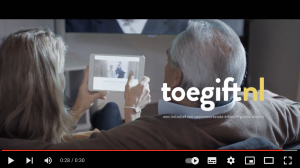
Patrick Gibbels: Swiss say no to opt-in for door drops
September 14, 2022
Anna Turner: Harnessing the power of digital for legacy fundraising
September 14, 2022With International Legacy Giving Day taking place on 13 September, and a raft of activities planned by joint legacy campaigns taking place in a number of countries across Europe, Elly Lont, senior legacies fundraiser at Greenpeace Nederland, and cofounder of Legacygiving.eu explains how the Dutch joint campaign came about and why joint legacy campaigns are so valuable.
‘I am because we are’
Ubuntu
While legacy fundraising takes place in a lot of countries with many nonprofits already having a fully integrated programme, joint legacy campaigns have a shorter history. Yet they can work as a major synergetic catalyser by changing the social norm about legacy giving – an ambitious, compelling aim that cannot be achieved by organisations individually.
For example, six years ago I was part of a group of around ten legacy fundraisers who agreed that despite us working hard on stimulating gifts in wills for our own organisations, the percentage of people who included a charity in their will remained stubbornly constant at around 5%.
Inspired by national joint legacy campaigns in the UK (Remember A Charity) and Belgium (Testament.be), we imagined what the potential could be if we joined forces.
So as a consortium, we started a joint Dutch legacy fundraising campaign to shift the social consensus around legacy giving. Our mutual objective was this: can we drive the now constant 5% of charitable gifts in wills up to, for example, 10%? That would mean twice as much legacy income for charities and presumably everybody’s slice of the pie would increase – an incredible impact on fundraising income.
But, we realised that in order to succeed and create that aimed for synergetic effect, we needed long-term joint commitment, trust, and loyalty from our members. Members needed a shared understanding of the bigger picture: ‘What is in it for us all, and therefore for my individual organisation?’ As such, we agreed that if in the creative process, one topic or cause wasn’t always highlighted, it was not something we would argue about, for we know, like the Ubuntu philosophy, that we can only change thinking and behaviour if we work together. It’s this way of thinking that makes joint campaigns fly, and benefit all.
In 2017, supported by our 75 members (which include World Animal Protection Nederland, Save the Children, Oxfam Novib, Plan International Nederland, Greenpeace Nederland and Cordaid), the Dutch joint campaign www.toegift.nl launched, reaching millions of citizens through TV, online, print, and radio.
Toegift.nl engages people with the possibility of leaving a gift in their will, in a positive manner, focusing on a younger age group (50-64 year olds) than charities usually target with their own legacy fundraising. It is essentially an inspirational awareness campaign, beneficial for all and only made possible by all. We have up to four people working intensively on the campaign as part of their day job, then there is a steering group, and for our members we have a yearly big members day and regular online sessions and workshops.
And after five years of our campaigning, 41% of the Dutch now know and recognise the campaign. More importantly, we have also measured impressive significant valid and representative KPIs:
| Impact of joint Dutch legacy campaign toegift.nl | 2017 | 2022 |
| “I have one or more charities in my will” | 5% | 7% |
| “I consider leaving a charity in my will” | 5% | 11% |
| “I admire people who put a charity in their will” | 57% | 90% |
As you can see, after the earlier mentioned years of stability, the 5% of people who included a charity in their will increased by a huge 40% to 7%. Considerers have more than doubled, and positivity towards people who include a charity in their will has also increased, from 57% to 90%.
The board, steering group, and members are happy with the results, but as proper fundraisers, never too content and always eager to learn and improve. And what is better than learning from the successes and challenges of similar joint campaigns?
With this in mind, legacy fundraising consultant Theo Hesen founded Legavision in 2015, an informal international consortium of national legacy campaigns all working to make charitable gifts in wills a social norm. The network brings together more than 22 international campaigns, spanning Australasia, Europe, and the USA. The aim is to connect and facilitate knowledge exchange between them by organising regular network calls, webinars, and an annual member conference. Legavision is a platform for joint campaigns learning from each other to maximise their impact.
Due to his upcoming retirement, Theo organises his last conference this year and hands over the coordination of the platform to Lena Vizy and myself, steering group members of the Dutch joint campaign and founders of legacygiving.eu. If you’re interested or have any questions, please reach out to us at info@legacygiving.eu.
About Elly Lont 
Elly Lont is senior legacies fundraiser at Greenpeace Nederland and, together with Lena Vizy, co-founder of legacygiving.eu. For 13 years, she has been working in fundraising, with the last seven in legacy fundraising. Elly lives in Amsterdam with her partner Matthias and maxi-dachshund Betty.
Image: Elly Lont (left) and Lena Vizy (right)
Legavision Conference 2022
The conference brings national joint legacy campaigns together to share insights, inspiring campaigns, best practices, and how to overcome common challenges. The event is a unique opportunity for joint campaigns to come together for an exciting exchange, learning and networking programme.
This year’s conference will cover different topics like campaigning and marketing, member recruitment, loyalty and retention, measuring and reporting impact, and future trends of legacy giving. It takes place on 13-14 October in Brussels. Find out more here.
Picture by Fauxels on Pexels





